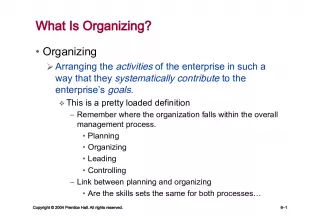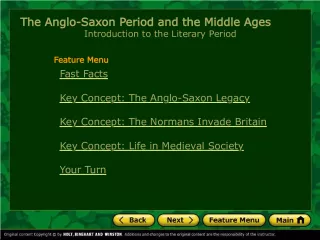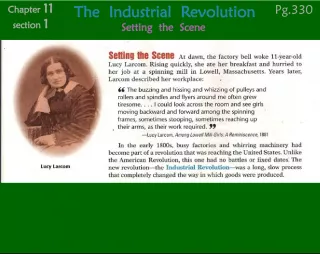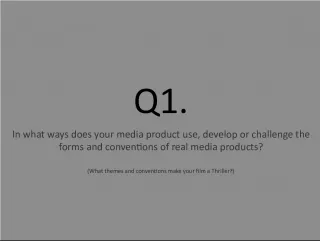The Middle Passage: A First-Hand Account


This primary source excerpt describes the experience of a person on a slave ship during the Middle Passage, the brutal journey from Africa to the Americas. The author tells of the fear and chaos
- Uploaded on | 3 Views
-
 stefania
stefania
About The Middle Passage: A First-Hand Account
PowerPoint presentation about 'The Middle Passage: A First-Hand Account'. This presentation describes the topic on This primary source excerpt describes the experience of a person on a slave ship during the Middle Passage, the brutal journey from Africa to the Americas. The author tells of the fear and chaos. The key topics included in this slideshow are . Download this presentation absolutely free.
Presentation Transcript
Slide1Lesson 5: Triangular Trade and the Middle Passage Unit 4: Colonial Life
Slide3Primary Source "At last, when the ship we were in, had got in all her cargo, they made ready with many fearful noises, and we were all put under deck, so that we could not see how they managed the vessel. But this disappointment was the least of my sorrow. The stench of the hold while we were on the coast was so intolerably loathsome, that it was dangerous to remain there for any time, and some of us had been permitted to stay on the deck for the fresh air; but now that the whole ship's cargo were confined together, it became absolutely pestilential. The closeness of the place, and the heat of the climate, added to the number in the ship, which was so crowded that each had scarcely room to turn himself, almost suffocated us. ..This wretched situation was again aggravated by the galling of the chains, now became insupportable... The shrieks of the women, and the groans of the dying, rendered the whole a scene of horror, almost inconceivable. Happily perhaps, for myself, I was soon reduced so low here that it was thought necessary to keep me almost always on deck; and from my extreme youth I was not put in fetters. In this situation I expected every hour to share the fate of my companions, some of whom were almost daily brought upon deck at the point of death, which I began to hope would soon put an end to my miseries. Often did I think many of the inhabitants of the deep much more happy than myself. I envied them the freedom they enjoyed, and as often wished I could change my condition for theirs. Every circumstances I met with, and heightened my apprehensions, and my opinion of the cruelty of the whites.”
Slide5•The source was written by Olaudah Equiano, who was born in West Africa in 1745. 1 • At age eleven, he was kidnapped, taken to Virginia, and sold to a British sea captain, who renamed him, Gustavus Vassa. • The captain then sold Equiano, who then ended up as a slave to a Quaker merchant in the West Indies. • Permitted to trade his own as well as his master's merchandise, Equiano had earned enough money to purchase his freedom by 1766. • An excellent navigator and writer, Equiano traveled widely and became a well-known abolitionist, or someone who opposes slavery. In 1789, he published his autobiography, and it became a bestseller. This selection is from this book. • He died in London in 1797. 1 The literary scholar Vincent Carretta has recently provided evidence that Equiano was likely born in South Carolina, not in Africa as his memoir claims. Scholars still consider Equiano’s account to be one of our very best sources on the Middle Passage and the experience of slavery even if it was slightly fictionalized. See Carretta, Vincent. Equiano, the African: Biography of a Self-Made Man. Athens: University of Georgia Press, 2005.
Slide61. Written EvidenceArguments that Equiano was born in Carolina Arguments that Equiano was born in Africa • Equiano's baptismal record at St Margaret’s Church, Westminster, dated 9 February 1759, records that he was born in 'Carolina'. • A Royal Navy muster roll from Constantine Phipp’s Arctic expedition of 1773 says that Equiano was born in 'South Carolina'. • In both cases, the information almost certainly came from Equiano himself • Equiano's own autobiography, The Interesting Narrative , tells us that he was born in Africa • This information comes from Equiano himself 2. Circumstantial Biographical Evidence Arguments that Equiano was born in Carolina Arguments that Equiano was born in Africa • Equiano gets the dates wrong about the ships in which he was brought from America to England which would be consistent with him having made the story up • Equiano's account of his life is usually very accurate when it can be checked against independent sources, making it surprising that his account of his first ten years can be shown to be inaccurate in parts • Equiano never used the name "Equiano" before publishing his autobiography. All his friends and acquaintances knew him by the name "Gustavus Vassa". He probably made up the name "Olaudah Equiano" as part of the careful construction of an African persona he carried out in 1789 • Although Equiano gets the dates wrong about the ships in which he was brought from America to England, he was a very young child at the time, and suffering a severe trauma, so it is reasonable to assume that his memory might sometimes be at fault • Equiano's account of his life is usually very accurate when it can be checked against independent sources, showing that it was his usual practice to tell the truth as far as he could remember • Although Equiano never used his birth name before 1789, this was not unusual. Few slaves or former slaves used their African names. Equiano's friend Quobna Ottobah Cugoano , for example, used his slave name of John Stuart throughout his life, except on the title page of his book (1787) http://www.brycchancarey.com/equiano/nativity.htm
Slide7NewEngland West Africa West Indies Rum Guns Cloth Tools Enslaved Africans Lumber Fish Flour Sugar Molasses Enslaved Africans Triangular Trade
Slide9The Middle Passage• After a long and difficult journey from the interior of Africa to the coast, enslaved Africans were forced to wait in dungeons or other prison-type areas. Waiting lasted weeks, months, and sometimes as long as a year. • Enslaved people were commonly branded with the imprint of the French, English, or Dutch company that had purchased them. • When slave ships arrived, the enslaved people were forced onboard into cramped living quarters beneath the decks where there was little ventilation and no sanitary facilities. There was no space for standing. People were chained together on their backs. • The journey across the Atlantic usually took from sixty to ninety days but could sometimes last up to four months. • Death rates were high. Historians estimate that between ten and twenty percent of those transported died on during the Middle Passage.
Slide10Newport, November 8th, 1755Captn. Caleb Godfrey— The Sloop Hare of which you are Master being loaded and ready to sail, Our Orders are that you improve the first favorable Wind and Weather and proceed directly to the Coast of Africa, where being arrived you are at Liberty to trade at such Places as you think most for our Interest.... Don’t purchase any small or old Slaves or as far as possible—Young Men Slaves answer better than Women—Keep a watchful Eye over ‘em and give them no Opportunity of making a Insurrection, and let them have a Sufficiency of good Diet, as you are Sensible your Voyage depends upon their Health. Use your utmost Endeavors to make all the Dispatch possible, as your Vessel is small and your Expenses great, and proceed from the Coast to—Charles Town in South Carolina, where we shall lodge Letters for you containing Instructions for your farther Proceedings. We recommend to you the utmost Frugality in your Expenses on the Vessel. We also entreat you to use your utmost Endeavors to promote Peace—Harmony and good Order on Board both with your Officers and others, especially the Officers.... Don’t omit writing us by all Opportunities we wish you Health and a prosperous Voyage who are your Friends, Sam. & Wm Vernon Primary Source #1
Slide11Primary Source #2
Slide12Primary Source #3
Slide13What do you think it is?What does it tell us about slavery in the colonies and the slave trade? #1 #2 #3 What is the connection between these 3 primary sources?
Slide14What do you think it is?What does it tell us about slavery in the colonies and the slave trade? #1 a letter written in 1755 to the captain of a slave ship called the Hare giving him directions about sailing to and purchasing slaves Sometimes slave ships traveled directly from to and then back to with a cargo of enslaved Africans. #2 an ad announcing the sale of enslaved Africans from the slave ship Hare. Enslaved Africans were bought and sold like goods such as animals or manufactured goods. They were treated like property, not people #3 A diagram of what a slave ship like the Hare looked like. Enslaved Africans were forced to lie below the deck close together where there was hardly room to breathe. The conditions must have been horrible. What is the connection between these 3 primary sources?























